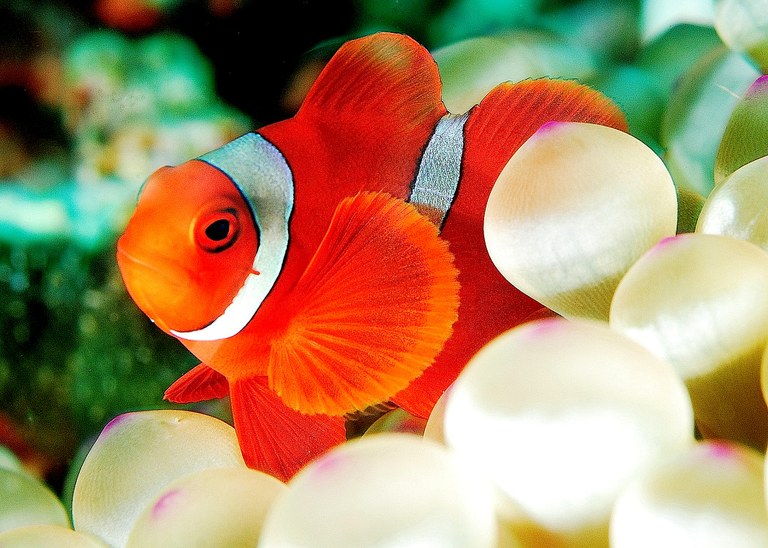Most reef fish can grow up healthy on monolithic diets consisting of, for example, only mysis shrimp or brine shrimp. However, these foods are lacking in color because they lack color-enhancing compounds. As a result, your fishes’ colors may suffer. Simply put, foods that are colorful tend to yield more colorful fish.
Astaxanthin is one such compound that is known to promote coloration in reef fish. Two studies help aquaculture feed manufacturers, breeders, and marine fishkeepers understand what concentration of astaxanthin best enhances clownfish coloration:
-
 Effect of Varying Levels of Astaxanthin on the Orange Color Intensity in Amphiprion ocellaris Cassidy Clark, Governor’s School for Science & Technology 2015-2016
Effect of Varying Levels of Astaxanthin on the Orange Color Intensity in Amphiprion ocellaris Cassidy Clark, Governor’s School for Science & Technology 2015-2016 -
 Determining an Optimum Level of Dietary Astaxanthin to Improve Coloration of Amphiprion ocellaris Lauren Cook, Governor’s School for Science & Technology 2015-2016
Determining an Optimum Level of Dietary Astaxanthin to Improve Coloration of Amphiprion ocellaris Lauren Cook, Governor’s School for Science & Technology 2015-2016
Reed Mariculture (DBA Reef Nutrition, an Advanced Aquarist sponsor) cooperated with Virginia Tech’s Virginia Seafood Agricultural Research and Extension Center (AREC) to evaluate “the color of Amphiprion ocellaris that were fed Reed Mariculture Inc.’s TDO Chroma BOOST™ fish and coral feed with the red carotenoid astaxanthin added at levels of 0, 150, 250, 400, 640 and 1,020 ppm for seven weeks. There were 40 juvenile fish per astaxanthin level in the study, for a total of 240 fish.”
As a result of these studies, Reed Mariculture formulated its new APBreed fish food, which are “top-dressed with enough microalgae Haematococcus pluvialis to result in 400 parts per million (ppm) of the red carotenoid astaxanthin” – the concentration found to achieve the ideal coloration for the clownfish in the study.
Reed Mariculture’s Executive Summary of the studies concluded:
According to both objective and subjective parameters, the most desirable market coloration in the Amphirion ocellaris (“false Percula clownfish”) can be achieved by a formulation where high-quality food is ‘top-dressed’ with the marine microalgae Haematococcus Pluvialis in a quantity sufficient to result in 400 ppm of the red carotenoid astaxanthin. Ideal coloration is achieved with the right balance of hue, saturation and luminosity.

In summary, what you feed your fish will not only affect their health but their appearance as well. While feeding mysis shrimp alone can sustain fish for their lifetimes, your fish may grow duller with age on “colorless” diets.










0 Comments